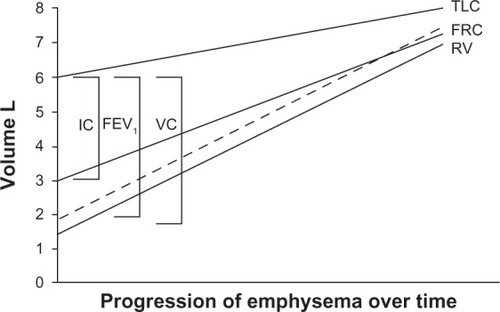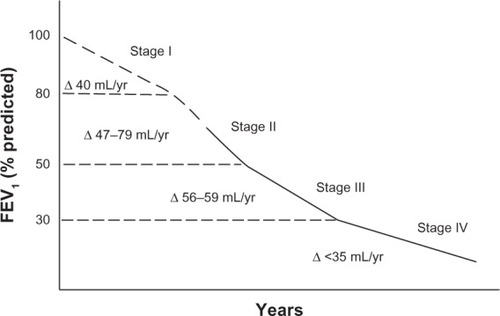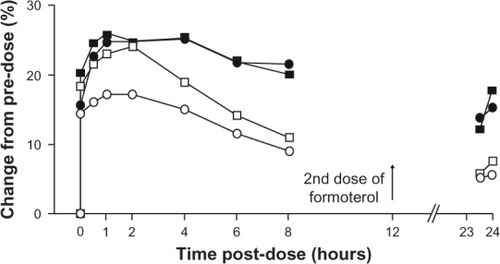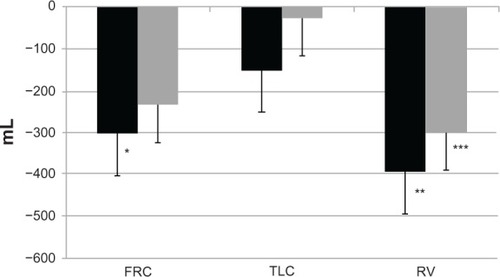Figures & data
Figure 1 Schematic illustration showing that the natural history of chronic obstructive pulmonary disease is characterized by a progressive increase in gas trapping measured as a progressive increase in residual volume.
Abbreviations: FEV1, forced expiratory volume in one second; FRC, functional residual capacity; IC, inspiratory capacity; TLC, total lung capacity; VC, vital capacity; RV, residual volume; L, liters.

Figure 2 Effect of active treatments (differences compared with placebo) on trough FEV1 at week 26.
Abbreviation: FEV1, forced expiratory volume in one second.

Figure 3 Range of average rate of decline of FEV1 in patients with chronic obstructive pulmonary disease according to severity of airflow obstruction.
Abbreviation: FEV1, forced expiratory volume in one second.

Figure 4 Comparison of effects of indacaterol and formoterol on FEV1 and inspiratory capacity as percent change in unadjusted mean values from predose.
Abbreviation: FEV1, forced expiratory volume in one second.

Figure 5 Changes in FRC, TLC, and RV at hour 4 after administration.
Abbreviations: FRC, functional residual capacity; TLC, total lung capacity; RV, residual volume.
